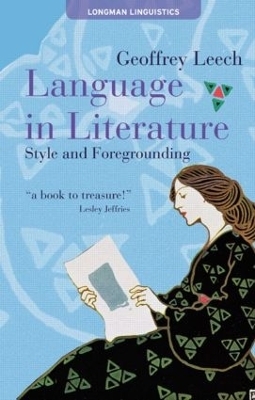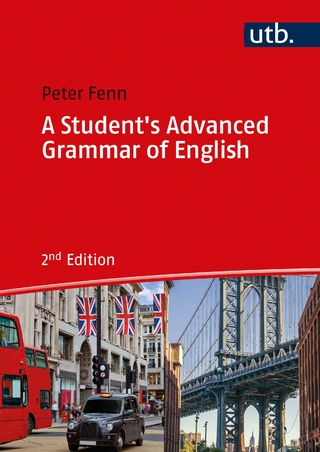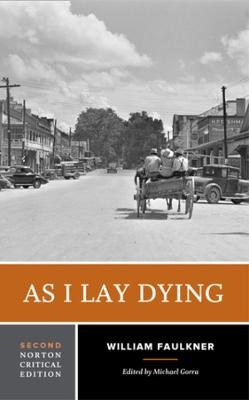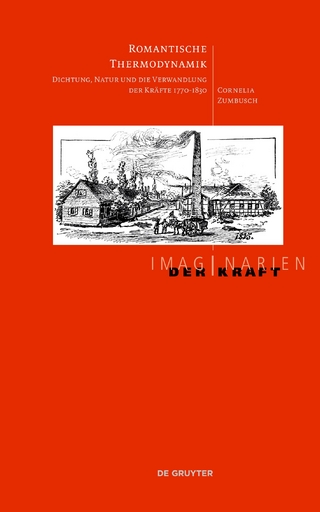
Language in Literature
Longman (Verlag)
978-0-582-05109-6 (ISBN)
In this book, seven earlier papers and articles, read previously only by a restricted audience, have been brought together with four new chapters, the whole volume showing a continuity of approach across a period when all too often literary and linguistic studies have appeared to drift further apart.
Leech sets the concept of foregrounding (also known as defamiliarization) at the heart of the interplay between form and interpretation. Through practical and insightful examination of how poems, plays and prose works produce special meaning, he counteracts the flight from the text that has characterized thinking about language and literature in the last thirty years, when the response of the reader, rather than the characteristics and meaning potential of the text itself, have been given undue prominence.
The book provides an enlightening analysis of well-known (as well as less well-known) texts of great writers of the past, including Keats, Shelley, Samuel Johnson, Shaw, Dylan Thomas, and Virginia Woolf.
Professor Leech is Emeritus Professor of English Linguistics at Lancaster University. He has written, co-edited and co-authored over 25 books and over 100 articles in the areas of linguistics and English language, especially in stylistics, English grammar, semantics, pragmatics and corpus linguistics. He was co-author, with Randolph Quirk, Sidney Greenbaum and Jan Svartvik, of the monumental and authoritative A Comprehensive Grammar of the English Language (Longman 1985). In pragmatics, too, his Principles of Pragmatics (Longman 1983) has been a landmark text. He is a Fellow of the British Academy, and a Member of Academia Europaea.
Preface
Acknowledgements
1. Introduction: about this book, its content and its viewpoint
1.1 Stylistics as an ‘interdiscipline’
1.2 The chapter-by-chapter progression of this book.
1.3 A digression on ‘literariness’
1.4 A list of texts examined
Notes
2. Linguistics and the figures of rhetoric
2.1 Introduction
2.2 A linguistic perspective on literary language
2.3 Figures of speech as deviant or foregrounded phenomena in language
2.4 Classifying figures of speech
2.5 Linguistic analysis and critical appreciation
Notes
3. ‘This Bread I Break’ – language and interpretation
3.1 Cohesion in a text
3.2 Foregrounding
3.3 Cohesion of foregrounding
3.4 Implications of context
3.5 Conclusion: interpretation
Notes
4. Literary criticism and linguistic description
4.1 The nature of critical statements
4.2 The nature of linguistic statements
4.3 The relation between critical and linguistic statements
4.4 Leavis on Keats’ ‘Ode to a Nightingale’
4.5 Linguistic support for Leavis’s account
4.6 Conclusion
Notes
5. Stylistics
5.1 Introduction
5.2 The text: ‘Ode to the West Wind’ by Percy B. Shelley
5.3 Stylistic analysis: deviation and foregrounding
5.4 Secondary and tertiary deviation
5.5 Coherence of foregrounding
5.6 The poem’s interpretation
5.7 Conclusion
Notes
6. Music and metre: ‘sprung rhythm’ in Victorian poetry
6.1 Introduction
6.2 A multi-levelled account of metre: four levels of metrical form
6.3 Why we need an extra layer of musical scansion
6.4 Sprung rhythm
6.5 Conclusion
Appendix: Further examples of musical scansion
Notes
7. Pragmatics, discourse analysis, stylistics and ‘The Celebrated Letter’
7.1 The close affinity between pragmatics, discourse analysis and stylistics: a goal-oriented framework
7.2 Politeness and irony in a multi-goaled view of communication
7.3 Samuel Johnson’s ‘Celebrated Letter’ as a demonstration text
7.4 Conclusion: there is no dichotomy between literary and non-literary texts
Notes
8. Stylistics and functionalism
8.1 Roman Jakobson: a formalistic functionalist
8.2 A goal-oriented multifunctionalism
8.3 Typologies of language function and kinds of meaning
8.4 Functionalism in terms of a threefold hierarchy
8.5 Applications to literature
8.6 Jakobson’s poetic function revisited: autotelism
8.7 Conclusion
Notes
9. Pragmatic principles in Shaw’s You Never Can Tell
9.1 Introduction
9.2 The plot of Shaw’s You Never Can Tell
9.3 Pragmatic principles and pragmatic deviation
9.4 (Un)cooperative and (im)polite behaviour in the play
9.5 Quality and quantity: rights and obligations
9.6 Pragmatic abnormalities of character
9.7 A system of pragmatic contrasts
9.8 ‘You never can tell’
Notes
10. Style in interior monologue: Virginia Woolf’s ‘The Mark on the Wall’
10.1 Introduction
10.2 The formal levels of phonology, lexigrammar and semantics
10.3 A digression on the stream of consciousness
10.4 The textual function
10.5 The ideational function: representation of (mock) reality
10.6 The interpersonal function
10.7 Conclusion
Notes
11. Work in progress in corpus stylistics: a method of finding ‘deviant’ or ‘key’ features of texts, and its application to ‘The Mark on the Wall’
11.1 A method in corpus stylistics: WMatrix
11.2 The results
11.3 Conclusion
Notes
12. Closing statement: text, interpretation, history and education
12.1 The book’s relation to other work
12.2 What is a text?
12.3 Ambiguity and interpretation
12.4 Historical and educational viewpoints
12.5 Conclusion
Notes
References
Index
| Erscheint lt. Verlag | 15.8.2008 |
|---|---|
| Reihe/Serie | Textual Explorations |
| Verlagsort | London |
| Sprache | englisch |
| Maße | 216 x 138 mm |
| Gewicht | 306 g |
| Themenwelt | Geisteswissenschaften ► Sprach- / Literaturwissenschaft ► Anglistik / Amerikanistik |
| Geisteswissenschaften ► Sprach- / Literaturwissenschaft ► Literaturwissenschaft | |
| Geisteswissenschaften ► Sprach- / Literaturwissenschaft ► Sprachwissenschaft | |
| ISBN-10 | 0-582-05109-6 / 0582051096 |
| ISBN-13 | 978-0-582-05109-6 / 9780582051096 |
| Zustand | Neuware |
| Haben Sie eine Frage zum Produkt? |
aus dem Bereich


